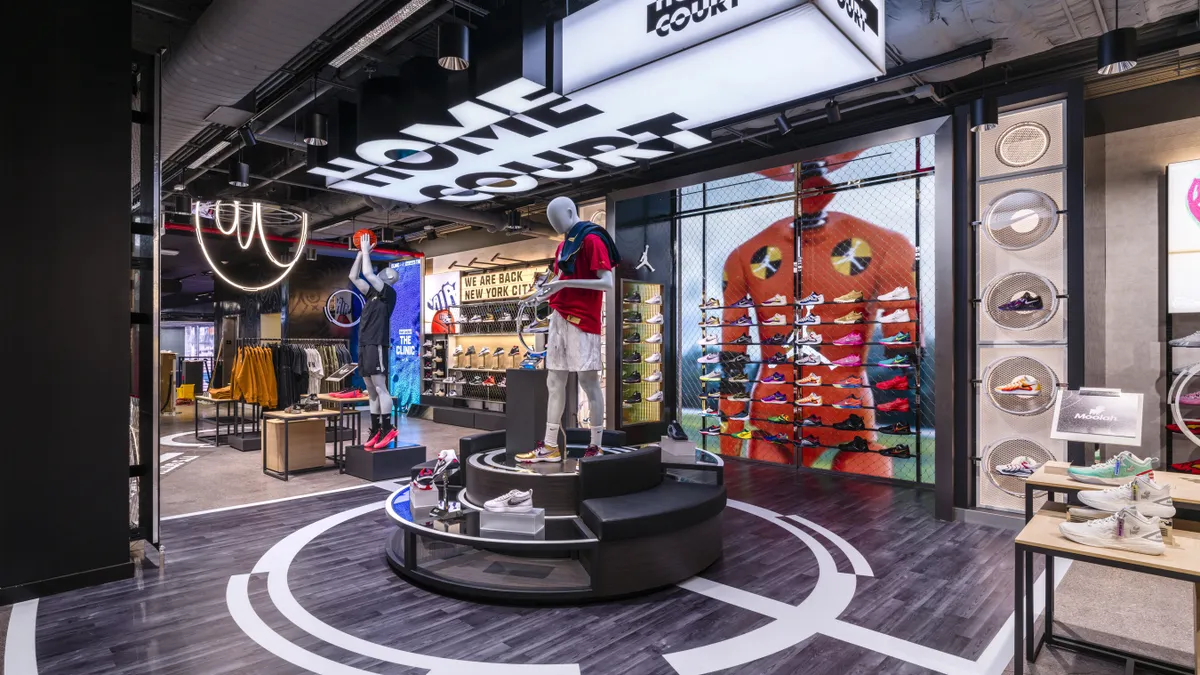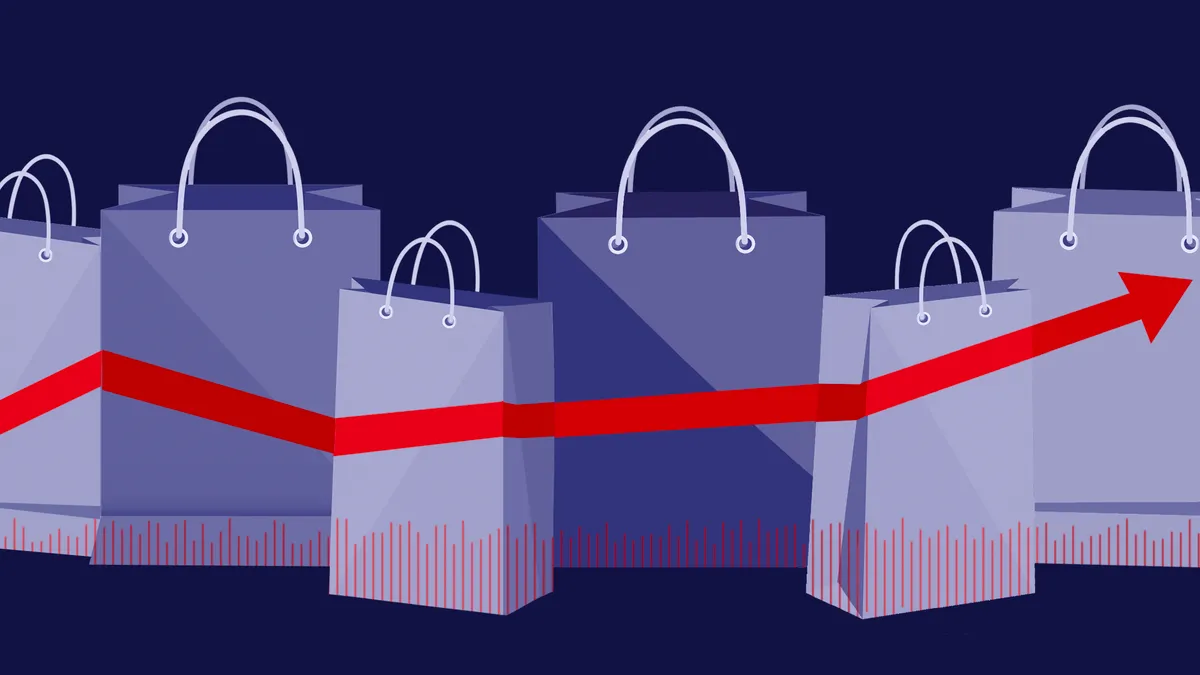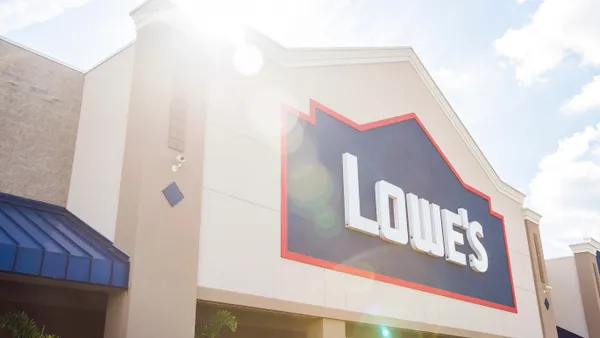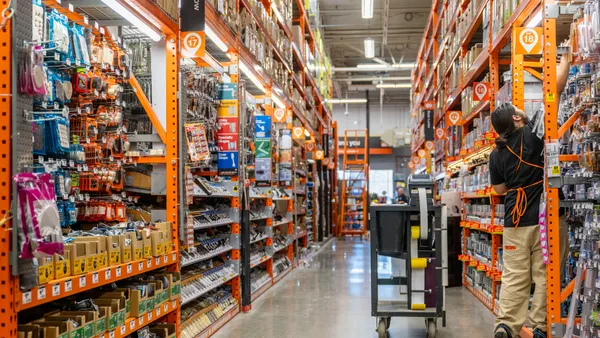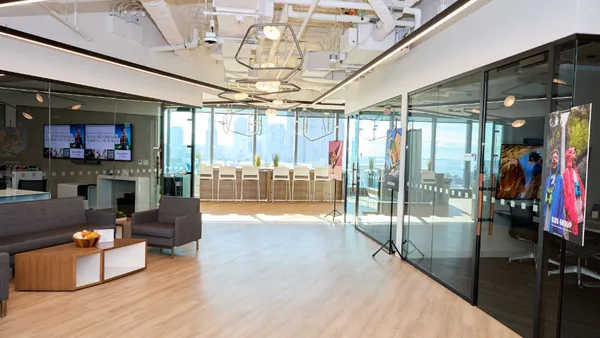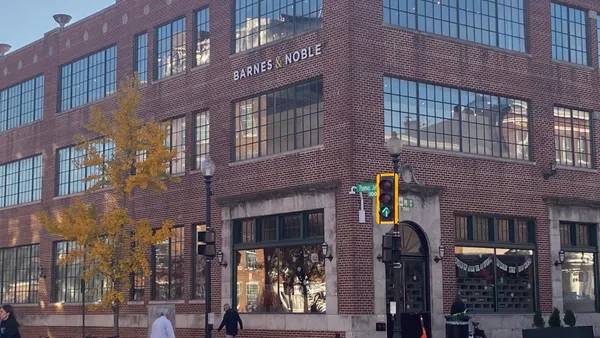Dive Brief:
- Following a year and a half with more sales declines than increases, Foot Locker returned to growth in Q2, with sales rising 2% to $1.9 billion, according to a company press release. The company also returned to comps sales growth, with a 2.6% increase year over year, and gross margin expansion, with an increase of 50 basis points.
- However, the company announced more operational changes, including plans to shutter its stores and e-commerce sites in South Korea, Denmark, Norway and Sweden by mid-2025. Foot Locker is also transferring ownership of its Greece and Romania operations to licensing business Fourlis Group. All told, the actions will close or transfer ownership of 30 stores.
- Foot Locker is also moving its headquarters from New York City to St. Petersburg, Florida, in order to reduce costs. The move, which will take place in late 2025, also builds on Foot Locker’s “meaningful presence in St. Petersburg,” and allows increased collaboration across teams and banners.
Dive Insight:
While Foot Locker reported more positive signs from its turnaround in Q2, executives at the same time indicated its work is far from done.
The company’s exit from several international markets is yet another effort to simplify Foot Locker’s business, after the retailer already announced it would shutter 400 stores by 2026, wind down its Sidestep and Eastbay businesses, ditch a planned expansion into Japan and shutter two European joint ventures. However, Foot Locker’s partnership with Fourlis Group in Greece and Romania will allow it to focus on store and e-commerce expansion in South East Europe, with the idea of opening 100 stores in the region over the next several years.
Displacing its headquarters to Florida is another method of reducing costs, though CEO Mary Dillon said on an earnings call that the company already has a large employee workforce there thanks in part to Champs Sports’ former headquarters being located in the area. She noted that the retailer will still maintain a presence in New York and won’t force employees to relocate, which should enable it to keep its current team.
At the same time, Foot Locker continues to invest heavily in its existing fleet through refreshes and new store concepts. The company’s new store format is performing so well that the retailer is pulling forward three additional store openings to this year. Total, that means Foot Locker will open eight of the format in 2024. Dillon said the stores are seeing higher conversion levels and basket sizes.
The company also completed 67 store refreshes in the quarter, on a goal of revamping two-thirds of the Foot Locker and Kids Foot Locker fleet by 2025, and Dillon said comps and gross margin at those locations are outperforming the rest of the chain. Including Foot Locker’s revamped New York flagship, which opened earlier this month, new formats represent 17% of the retailer’s global square footage, on a goal of 20% by 2026. But net loss in the quarter also widened from $5 million to $12 million, which GlobalData Managing Director Neil Saunders said was likely due to the cost of Foot Locker’s turnaround initiatives.
“This kind of temporary step back is needed if Foot Locker is to eventually advance,” Saunders said in emailed comments. Additionally, Saunders noted that Dillon and her team have been proactive in tackling challenges at the retailer and noted that “more tangible signs” of a turnaround are beginning to show, including in its work on stores.
“In Foot Locker stores the assortment of sneakers is broader and more balanced both in terms of the types and purpose of products, as well as the mix of brands. The decision to invest in stores is also sensible, and the latest shop formats create a more engaging and interesting experience which is exactly where Foot Locker needs to play if it wants to retain its position as a market leader,” Saunders said, noting that store investment will also likely strengthen its relationship with key brands like Nike. “The slowdown in the market has impacted brands as well as retailers and most companies are now looking for partners to help them elevate their positions. With improved stores and experiences, Foot Locker is sending a very clear signal that it is one of the wholesale channels that brands need to work with.”



